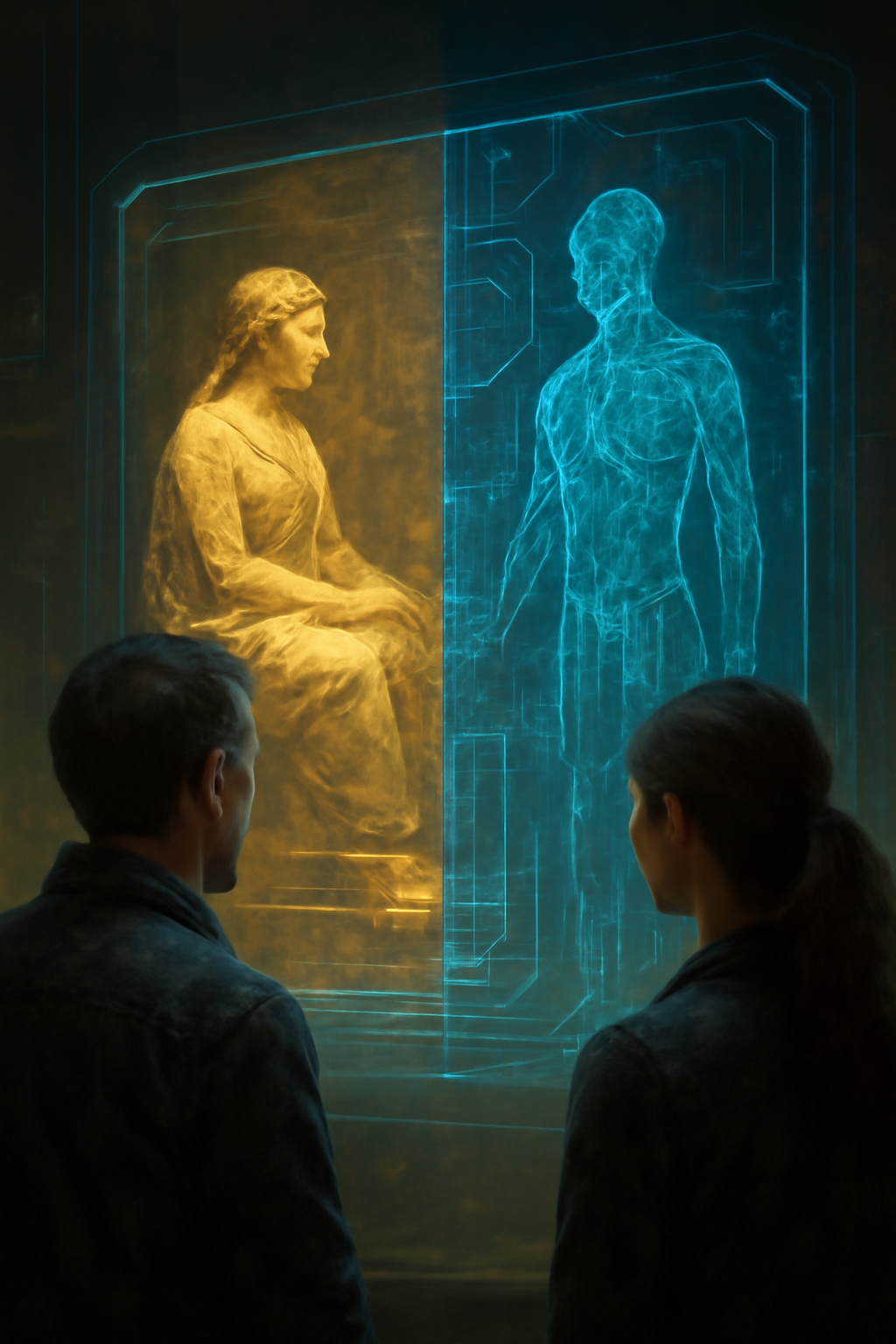Sem raízes, a inovação se torna vazia.
Vivemos em uma era de aceleração impressionante.
Todos os dias surgem novas tecnologias prometendo transformar como vivemos, trabalhamos e nos relacionamos.
Inteligência artificial, realidade virtual, biotecnologia, computação quântica — a lista de conceitos futuristas cresce sem parar, e a tentação de olhar apenas para a frente é enorme.
Ainda assim, em meio a essa corrida constante, existe uma verdade crucial: para construir um futuro significativo e sustentável, precisamos antes compreender de onde viemos.
Inovação sem memória — desprovida de contexto histórico e cultural — arrisca se tornar vazia.
Pode gerar soluções deslumbrantes para problemas que não existem ou, pior, recriar velhos erros com novos nomes.
Aprender com o passado não é nostalgia; é uma bússola para navegar um amanhã incerto.
O Perigo da Inovação Sem Memória

Imagine construir um arranha-céu sem fundação.
Ele pode até brilhar por um tempo, mas o colapso é inevitável.
O mesmo princípio vale para a inovação.
Quando avançamos tecnologicamente sem nos ancorarmos nas lições históricas ou na sabedoria cultural, nos expomos a três grandes riscos:
Repetir Erros do Passado:
A história está repleta de inovações que causaram danos porque seus inventores ignoraram consequências humanas ou éticas.
A Revolução Industrial trouxe progresso, sim — mas também desigualdade social e degradação ambiental com as quais ainda lidamos hoje.
Criar Soluções Irrelevantes:
Uma tecnologia pode ser avançada e, ainda assim, totalmente desconectada das necessidades humanas reais ou dos valores culturais.
Se as pessoas não se identificam com ela, fracassará — ou será usada de maneiras inesperadas.
Perder a Conexão Humana:
A tecnologia existe para servir a humanidade, não a substituir.
Quando esquecemos nossa história e nossa complexidade emocional, a eficiência ocupa o lugar da empatia — e é nesse momento que o progresso perde o sentido.
O Passado como Mapa para o Futuro
A história não nos entrega um manual do futuro, mas sussurra padrões e alerta que ajudam a encontrar direção.
1. Entender a Evolução das Necessidades Humanas
Os desejos centrais da humanidade — comunicação, pertencimento, segurança, criatividade — não mudam.
O que muda é a forma de atendê-los.
Quando estudamos como a imprensa democratizou o conhecimento ou como a eletricidade transformou a vida cotidiana, percebemos que toda inovação é, no fim, sobre conexão e empoderamento.
Essa consciência nos ajuda a projetar tecnologias que atendem necessidades humanas atemporais de forma mais sábia e compassiva.
O que as inovações do passado nos ensinaram sobre o que realmente importa para as pessoas?
2. O Contexto Cultural Molda a Adoção
A cultura funciona como a camada de tradução entre tecnologia e sociedade.
Uma invenção celebrada em um lugar pode ser rejeitada em outro pelos valores, costumes ou visões de mundo diferentes.
Compreender tradições, rituais e texturas sociais de cada comunidade nos permite criar ferramentas que ressoam localmente, em vez de impor um único modelo global.
Até mesmo as redes sociais evoluem de forma distinta conforme a cultura — um lembrete de que a inovação só prospera quando sabe ouvir.
3. Tradição Como Semente de Criatividade
Tradição não é o oposto de inovação; muitas vezes, é seu solo mais fértil.
Artistas digitais, por exemplo, buscam inspiração em mitologias antigas, pinturas clássicas e narrativas folclóricas para criar experiências multissensoriais na era moderna.
Quando o antigo e o novo se encontram, a criatividade floresce — e a inovação deixa de ser rebelião contra o passado para se tornar diálogo com ele.
4. Aprender com Lições Éticas e Morais
Toda invenção tem dois lados — potencial e perigo.
A bomba atômica, uma das criações mais poderosas da humanidade, permanece como um alerta sombrio sobre tecnologia desconectada da ética.
Ao estudar conflitos morais e sociais associados a inovações anteriores, podemos antecipar melhor os dilemas provocados pelas tecnologias emergentes — do viés algorítmico à manipulação genética — e responder com cautela e consciência.
Tradição e Cultura: As Fundações da Inovação

A cultura não são correntes que nos prendem; são raízes que nos dão direção e estabilidade. Elas oferecem:
Um Sentido de Identidade:
Saber de onde viemos moldar quem somos. Tecnologias ancoradas na identidade cultural refletem nossos valores em vez de apagá-los.
Sabedoria Coletiva:
Séculos de tentativas e erros, codificados em rituais, arte e conhecimento compartilhado, formam o maior manual de instruções da humanidade. Ignorá-lo é reiniciar o experimento do zero todas as vezes.
Histórias e Significado:
A cultura transforma a existência em narrativa. A tecnologia pode amplificar essas histórias — mas só se reconhecer primeiro o seu valor.
Construindo um futuro lembrado
Navegar pelo futuro tecnológico sem compreender a história é como abrir um romance no capítulo final.
Podemos entender o movimento, mas perdemos o significado.
As inovações mais duradouras são aquelas que olham para os dois lados — para a frente, em direção às possibilidades, e para trás, em direção ao patrimônio.
Elas honram a linhagem da curiosidade humana que as criou, usando a memória não como peso, mas como guia.
Quando entrelaçamos história, cultura e ética em nossas ambições tecnológicas, criamos um futuro que não é apenas avançado — é humano, consciente e cheio de propósito.
A inovação lembrada de suas raízes deixa de ser apenas invenção; torna-se sabedoria em movimento.
Qual lição histórica você acha que os inovadores de hoje mais precisam recordar?
